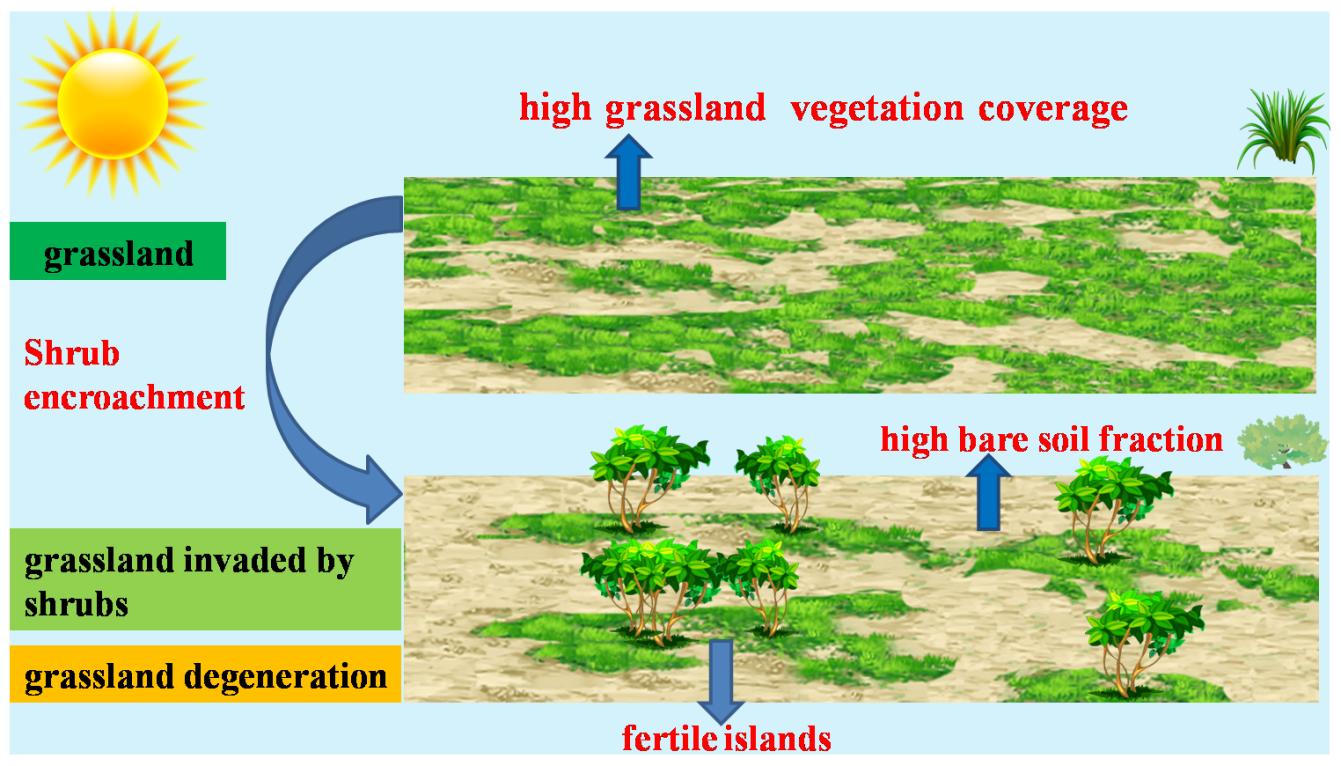
Grassland ecosystems are being invaded by shrubs around the world, especially in temperate semi-arid regions of the Northern Hemisphere, under the influences of climate change and human activities.
Shrub encroachment can affect not only the properties of grassland ecosystem, but also the regional or global climate.
Recently, a research team led by Prof. JIANG Ming from the Northeast Institute of Geography and Agroecology of the Chinese Academy of Sciences analyzed for the first time the biophysical effects of shrub encroachment on regional climate in semi-arid areas of temperate regions of the Northern Hemisphere.
This work was published in Agricultural and Forest Meteorology on April 10.
The researchers found that in most of the northern temperate region, shrub encroachment would increase the surface temperature, especially the daytime temperature, while shrub encroachment would bring a certain cooling effect in southwest North America and Central Asia.
In most of the northern temperate region, with the invasion of shrubs, soil moisture and nutrients gradually accumulate in the soil, creating the "fertile islands" of shrubs. The formation of "fertile islands" may cause soil material erosion among shrubs and loss of soil water and nutrients, which is not conducive to the growth of the surrounding grassland.
"Due to the decrease of evapotranspiration caused by the increase of bare soil and the decrease of vegetation coverage, shrub encroachment has a warming effect on the surface temperature in most of the northern temperate region," said Prof. JIANG.
In the relatively humid southwest of North America, shrub encroachment-induced "fertile islands" may promote the growth of vegetation. So, the decrease of bare soil area and increase of evapotranspiration seem to account for the decrease of surface temperature in this region.
In the extremely arid central Asia, shrub coverage and density in this area are low, and the conversion of grassland into shrubland does not cause large changes in bare soil fraction. As the shrub encroachment further aggravates the drought degree in this region, the decrease of soil water content leads to the increase of surface albedo and then the cooling effect.
"More attention should be paid to the climate feedbacks of shrub encroachment, especially considering the distinct effects in different regions and how these climate feedbacks are likely to further impact ecosystem properties," said Dr. SHEN Xiangjin, first author of the study.

Schematic of the effect of shrub encroachment on land surface temperature in semi-arid areas of temperate regions of the Northern Hemisphere (Image by SHEN Xiangjin)

86-10-68597521 (day)
86-10-68597289 (night)

52 Sanlihe Rd., Xicheng District,
Beijing, China (100864)

